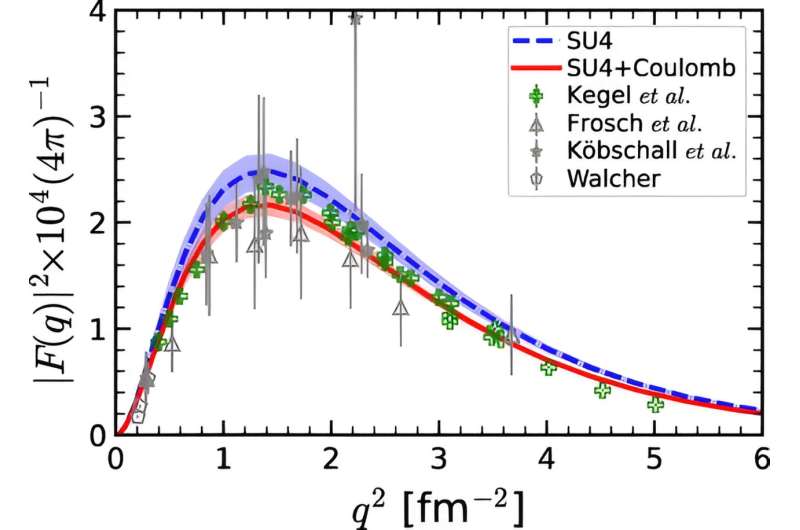This article has been reviewed according to Science X's editorial process and policies. Editors have highlighted the following attributes while ensuring the content's credibility:
fact-checked
peer-reviewed publication
trusted source
proofread
Exciting the alpha particle: International team validates helium-4 transition calculations

An important part of physics research is examining why theoretical calculations and experimental results sometimes don't match. A recent experiment in Germany studied the helium-4 nucleus, also known as an alpha particle. Helium-4 consists of only two protons and two neutrons, making it relatively easy to describe using theoretical calculations. This makes it useful for precise tests of nuclear physics.
The experiment used the scattering of electrons to examine how helium-4 transitions from its basic energy state to its first excited state. The experiment found evidence of a disagreement between theory and experiment and sparked concern about the accuracy of current theoretical calculations.
Now, an international team has performed new calculations of the observed transition. Their results agree well with the new experimental results. The study is published in the journal Physical Review Letters.
The first excited state of the helium-4 nucleus has an energy just above the threshold for the nucleus to separate into a proton and a hydrogen-3 nucleus. The properties of this state depend sensitively on the small gap between its energy and the threshold for separation.
The new calculations accurately reproduce this energy difference, and this may explain why they also reproduce the new experimental data from Germany. The findings will help physicists make accurate theoretical predictions of nuclear structure in the future.
Researchers from University of Bonn (Germany), Forschungszentrum Jülich (Germany), Gaziantep Islam Science and Technology University (Turkey), and the Facility for Rare Isotope Beams at Michigan State University performed ab initio lattice calculations using an interaction that reproduces the overall properties of light and medium-mass nuclei.
The calculations of the transition from the 4He ground state to its first excited state are in good agreement with recent experimental results from Mainz.
A key feature of the new lattice calculations is that they accurately reproduce the difference between the excited state energy and the energy threshold for separation into a proton and a helium-3 nucleus.
Other recent theoretical work has explored the importance of accurately reproducing this energy difference. The new results give confidence that the nuclear force is well understood, but researchers must carefully consider sensitivities to nearby energy thresholds in future theoretical calculations.
More information: Ulf-G. Meißner et al, Ab Initio Calculation of the Alpha-Particle Monopole Transition Form Factor, Physical Review Letters (2024). DOI: 10.1103/PhysRevLett.132.062501
Journal information: Physical Review Letters
Provided by US Department of Energy




















